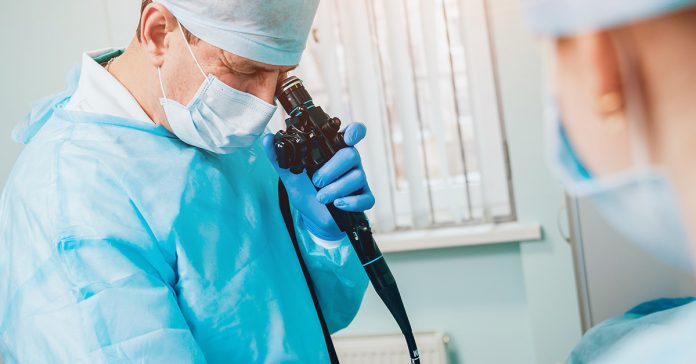Bryn Sage, CEO of remote patient monitoring provider Inhealthcare, explains how the company’s digital health technology is helping to ease pressures across the NHS, reduce hospital admissions, and improve patients’ health outcomes
Hospital trusts are launching pre- and post-operative virtual wards with Inhealthcare to improve health outcomes, free up beds and boost productivity.
The groundbreaking services are designed to help the NHS tackle the growing backlog of elective care and represent the next generation of remote monitoring in action.
Partnering with NHS trusts to support patients
In the North of England, our company has partnered with a leading NHS hospital trust to develop a range of pathways to support patients at home in the days leading up to operations.
The first is for patients undergoing an ERCP, an endoscopy to remove gallstones from the bile duct or relieve a blockage of the bile duct by the tumour. The NHS carries out 45,000 such procedures every year for inpatients and outpatients.
Our pre-operative virtual ward enables clinicians to monitor and manage their patient’s health at home without needing them to stay in the hospital before an ERCP. Care teams can carry out twice-daily observations for oxygen saturation, temperature, blood pressure, heart rate, pain, eating and drinking, vomiting and ability to pass urine – and provide medical care and advice when necessary.
The ERCP pathway aims to increase the procedure’s success, shorten hospital stays and step up treatment levels. It also enables patients to prepare for the procedure in the comfort of their own home.
We are working with the trust to launch more pre-operative pathways in early 2024 for patients awaiting general surgical, oncology and vascular procedures, among others.
In eastern England, we have partnered with a foundation trust to develop post-operative virtual wards. These are designed to help patients recover from surgery in the comfort of their own home rather than in crowded hospital wards. Again, clinicians can monitor their patients by taking regular observations and intervening when necessary.
Our virtual wards are based on tried-and-tested remote monitoring technology, resulting from many years of research and development and the bedrock for more than three million episodes of NHS care to date.
As far back as 2016, we pioneered an early iteration of the virtual ward model in Norfolk with a service to help increase life expectancy and improve the quality of life for patients diagnosed with heart failure. Analysis of the six months before and after our introduction showed a significant reduction in hospital bed days, A&E attendances, GP visits and out-of-hours appointments.
The Inhealthcare platform
The Inhealthcare platform provides patients with a choice of communication channels and makes it easy to share readings with their care teams. The choice includes the traditional landline telephone, making virtual wards accessible for patients without the latest digital technology. Their readings are categorised according to a red-amber-green rating, helping clinicians to prioritise those in the greatest need.
The Inhealthcare platform integrates seamlessly into local health and care records to improve the flow of information between different parts of the health and care system and prevent patients from falling through the cracks. This makes information available at the right place and time so clinicians can provide more timely care.
Inhealthcare: “Data can save lives”
We know that data can save lives, and remote monitoring services such as virtual wards are generating vast amounts of data such as vital signs readings, questionnaire responses and several alerts and communications.
Trusts have direct access to the latest operational data about their patient cohort and can see which patients have triggered alerts, are about to breach thresholds or have breached a certain number of times. This enables clinicians to stratify levels of risk within the cohort and improve patient management.
Trusts can also view strategic data, such as how efficiently and effectively a pathway is being delivered, identify productivity improvements, and benchmark their performance against national targets and peer organisations.
This strategic view offers significant research potential. Data scientists can identify the factors that weigh upon health outcomes and apply these rules to patient cohorts to pinpoint those at risk of deterioration. In other words, it enables machine learning.
In our view, reporting, analytics, and direct access to data will become essential for delivering successful innovation at scale and helping the health service address long-term challenges. Given the emphasis on how funding is spent by the NHS, these tools will also become essential for demonstrating value for money, especially when times are tough.
The future for virtual wards and the NHS
With the waiting list for hospital treatment in England standing at nearly 7.8 million, forward-looking hospital trusts are looking at how remote monitoring can help free up beds, boost productivity, and improve patients’ health outcomes. The launch of new virtual wards for patients before and after operations, starting with procedures such as ERCP endoscopies, shows the NHS is rising to the challenge.

This work is licensed under Creative Commons Attribution-NonCommercial-NoDerivatives 4.0 International.











